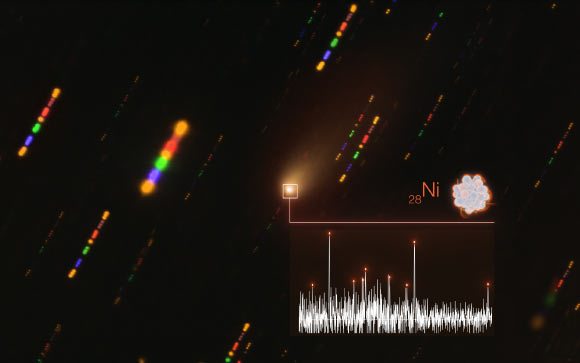Using spectroscopic observations from ESO’s Very Large Telescope, a duo of astronomers from Poland has detected atomic nickel vapor in the cold coma of 2I/Borisov, an interstellar comet discovered on August 30, 2019 by amateur astronomer Gennady Borisov.
Source: Sci News
“The scientific value of objects such as 2I/Borisov is absolutely overwhelming, as they carry a plethora of information about their home planetary systems,” said Piotr Guzik, a Ph.D. candidate at the Astronomical Observatory at the Jagiellonian University.
“We were curious what atoms and molecules make up the gasses around 2I/Borisov,” added Dr. Michał Drahus, also from the Astronomical Observatory at the Jagiellonian University.
Guzik and Dr. Drahus observed 2I/Borisov with the X-SHOOTER spectrograph on the Unit Telescope 2 of ESO’s Very Large Telescope on 28, 30 and 31 January 2020.
At the time of the observations, the mean heliocentric and geocentric distances of the comet were 2.322 AU and 2.064 AU, respectively, and the mean velocity was 19.16 km/s.
“A portion of the 2I/Borisov’s spectra show nine emission lines that are not associated with any species that are routinely or less frequently detected in Solar System comets,” they said.
“We recognized the detected lines as the spectroscopic signatures of atomic nickel vapor, Ni I.”
The finding is surprising, because gases with heavy metal atoms had only been observed in hot environments, such as in the atmospheres of ultrahot exoplanets or evaporating comets that passed too close to the Sun, such as comet Ikeya-Seki (C/1965 S1).
“Nickel in 2I/Borisov seems to originate from a short-lived nickel-containing molecule with a lifetime of 340 seconds at 1 AU and is produced at a rate of 0.9*1022 atoms per second,” the researchers said.
“This is really cool because heavy elements have not been observed in cold cosmic environments before,” Guzik added.
The team’s paper was published today in the journal Nature.
Source: Sci News
































Leave a Comment
You must be logged in to post a comment.